All About Vinegar
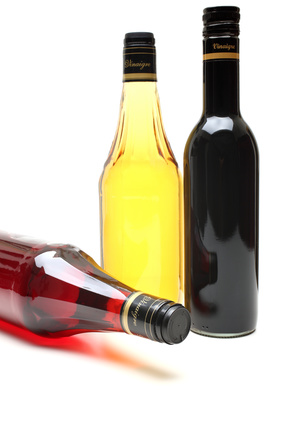 Seasoned cooks know that a well-stocked pantry includes a variety of vinegars. Vinegar is an important ingredient in cooking as it helps to balance flavors and gives food a wonderful zing. The zip of vinegar is a great asset in salad dressings and marinades where tartness is needed. If a dish seems too sweet, adding a touch of vinegar can help balance things out. Not to mention homemade salad dressing made from olive oil, vinegar, and seasonings is far superior to bottled dressing, costs a fraction of the overly sweetened bottled versions, and you can make as much or as little as you want.
Seasoned cooks know that a well-stocked pantry includes a variety of vinegars. Vinegar is an important ingredient in cooking as it helps to balance flavors and gives food a wonderful zing. The zip of vinegar is a great asset in salad dressings and marinades where tartness is needed. If a dish seems too sweet, adding a touch of vinegar can help balance things out. Not to mention homemade salad dressing made from olive oil, vinegar, and seasonings is far superior to bottled dressing, costs a fraction of the overly sweetened bottled versions, and you can make as much or as little as you want.
What exactly is vinegar?
The word vinegar comes from the French vin aigre for “sour wine.” Vinegar is an acidic liquid produced through fermentation. Any liquid containing ethanol can be used to make vinegar such as wine, champagne, beer, cider, etc. Vinegar is typically around 5% acetic acid and the rest is water, plus a few other compounds.
How long does vinegar last?
Here’s what the Vinegar Institute says: “Vinegar’s shelf life is almost indefinite. Because of its acid nature, vinegar is self-preserving and does not need refrigeration. White distilled vinegar will remain virtually unchanged over an extended period of time. And, while some changes can be observed in other types of vinegars, such as color changes or the development of a haze or sediment, this is only an aesthetic change.”
Use it as a substitute acid
Vinegar is useful for substitutes for buttermilk and citrus juice: Buttermilk: In place of buttermilk, combine 1 tablespoon vinegar with 1 cup whole milk and let it stand a few minutes.
Use vinegar in recipes calling for lemon or lime juice. Use a little less vinegar than the amount of lemon or lime juice a recipe calls for.
Types of vinegar and what they have to offer:
.jpg) Balsamic vinegar is the queen of vinegars. It is aged like wine and the real stuff comes from Modena or Reggio Emilia in Italy. It is thick and complex in flavor and you can drizzle it on so many foods, not just salad. It’s made from the must (freshly pressed juice) of white Trebbiano grapes. The older the balsamic, the sweeter and more syrupy (and expensive.) If you want to class up a dish, add a little balsamic for a taste bud teaser.
Balsamic vinegar is the queen of vinegars. It is aged like wine and the real stuff comes from Modena or Reggio Emilia in Italy. It is thick and complex in flavor and you can drizzle it on so many foods, not just salad. It’s made from the must (freshly pressed juice) of white Trebbiano grapes. The older the balsamic, the sweeter and more syrupy (and expensive.) If you want to class up a dish, add a little balsamic for a taste bud teaser.
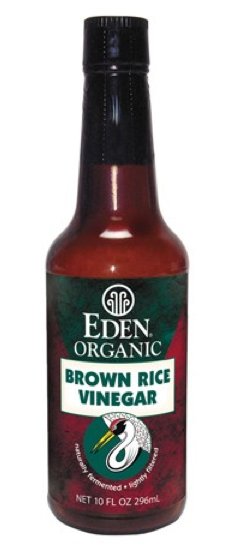
Rice Vinegar is made from fermented rice or from sake. (If it’s made from sake it’s called seasoned rice vinegar.) It’s a light colored and mild vinegar used in Asian cuisine.
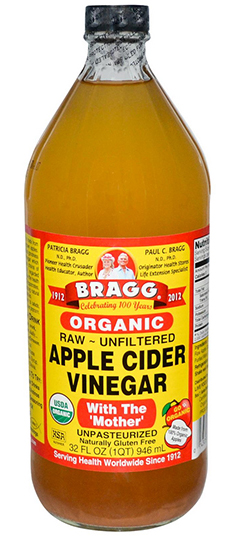
Apple cider vinegar is made from apple cider or apple must, and has a dark, gold color. You can buy it unfiltered and unpasteurized with the mother of vinegar still in it. (The mother is the dark, web-like gelatinous substance formed from naturally occurring pectin and apple residues – some people find the mother unpleasant but it is perfectly natural.) Apple cider vinegar is a good all-purpose vinegar and is also popular for its medicinal qualities.
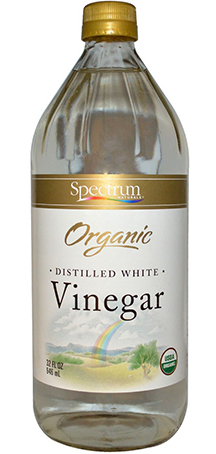
Distilled white vinegar is made by fermenting distilled alcohol. It’s very strong and is often used for pickling. It’s also a great ingredient for non-toxic household cleaning.
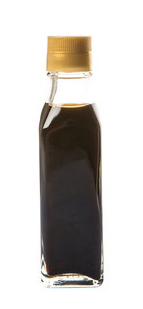
Malt vinegar is made from barley that is brewed into beer and then allowed to ferment and age. A British and Canadian favorite for seasoning fish and chips.
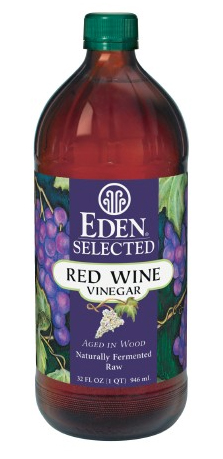
Wine vinegar is made from red or white wine. Red wine vinegar is common in the Mediterranean. White wine vinegar is a moderately tangy vinegar that is used to make Hollandaise and Béarnaise sauces, and is also great for homemade fruit or herb vinegars. Wine vinegars are great for vinaigrettes and in marinades for meat and vegetables.
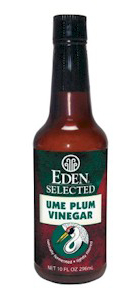
Ume plum vinegar or umeboshi plum vinegar is from Japan and is very salty. Ume vinegar, technically a brine, is the by-product of the umeboshi making process. Umeboshi are red, pickled plums used in many Japanese dishes. It’s good for dressings, dips, and with vegetables.
Other vinegars: sherry, champagne, tarragon (herb infused white wine vinegar), raspberry (fruit infused white wine vinegar), Verjus, (not technically vinegar) is a sour juice made from unripened red or white grapes.
Here are a few recipes from our website that feature vinegar:
German Braised Red Cabbage
Hoppin’ John with Greens
Balsamic Strawberries
Braised Kale with Garlic and Vinegar
Roasted Pear Pomegranate Salad
Balsamic Roasted Carrots and Parsnips
Sour Milk Blueberry Pancakes
Spinach with Tempeh Croutons